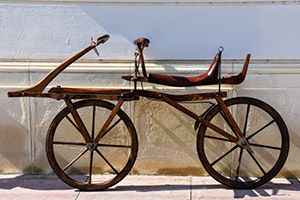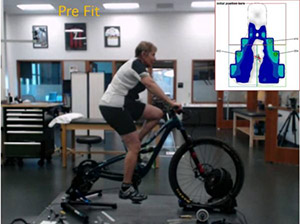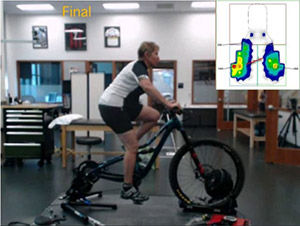
The modern bicycle’s predecessor called a Laufmaschine, or “Dandy Horse,” was a basic seat perched above two wheels to help a rider travel faster than walking and with reduced effort. The narrow seat, or saddle, allowed him to duplicate a walking or running motion without the physical exertion of supporting his entire weight (It was not, of course, considered lady-like to ride a Dandy Horse in 19th Century Europe). Present-day bicycles are highly-engineered tools designed for efficiency, comfort and style. Although many riders spend some time standing on a descent or difficult portion of a climb, they are still most often seated and looking for efficiency. As a result, the shape and size of the saddle is key to proper spinal alignment, body position and the rider’s relationship to the pedals affecting everything from power output, to safety, to comfort.
For example, a rider experiencing significant shoulder discomfort might expect a handlebar adjustment to change body position and relieve the pain associated with riding. But what if the true culprit is the positioning, size, and shape of the saddle? Even though the rider is not experiencing any seating discomfort, what-so-ever, could changing the saddle be the change that changes everything?
The answer is, quite likely, yes!

The rider in this image has an unnatural posture resulting in altered riding mechanics. She has a rounded upper back and her shoulders are elevated up toward her ears. This posture results in reduced core stability, reduced “Glute” (the big muscles in her butt) activity for powering her hips and stabilizing her knees, and poor shoulder position needed for supporting her body, controlling her bike and safely absorbing bumps in the road.
Initial saddle-mapping shows she is only being supported by the edges of the saddle and is not receiving proper support while in an appropriate forward lean. As a result she has a tendency to roll her hips back and a little more upright, then to reach the handlebars she must round her back. A slightly wider saddle, minimal height adjustment and a few postural cues could allow her to ride in proper posture.
The second image shows the rider and saddle map after those critical saddle adjustments with no change to handlebar positioning. Posture is significantly better; no rounding in the back, and better forward lean. The rider now has significantly reduced shoulder discomfort, can generate more power, and has lowered the health risk to her hips, knees and shoulders!

In short: Comfortable equals fast!
Have you had shoulder discomfort while riding? What did you do to fix it? Did you have good results? Make sure to comment below and share this article with someone you think would find it useful.


